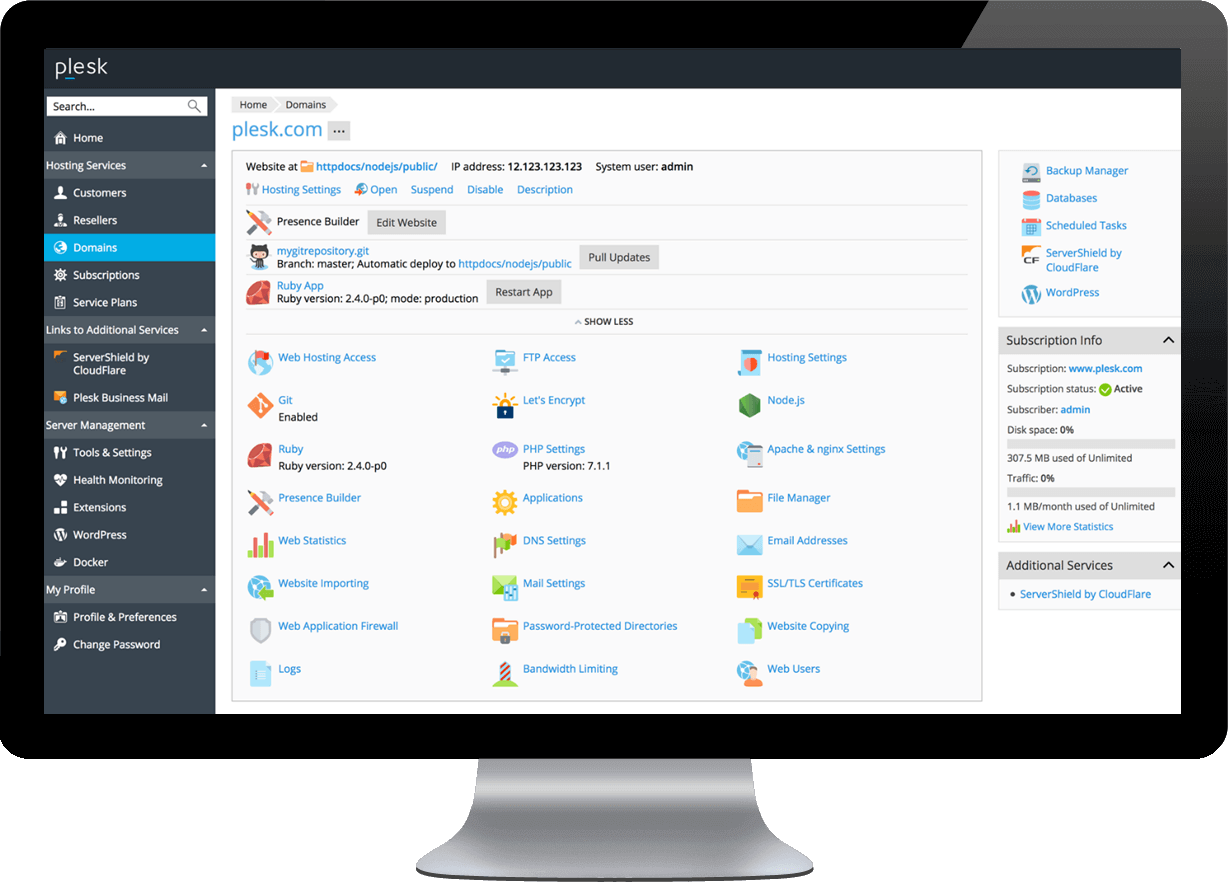
Domain: Add domains, subdomains and aliases to your server and configure DNS and DNSSEC. Secure them all with Let's Encrypt or Symantec SSL.
Email: Horde and RoundCube webmails on Plesk for Linux, and Horde on Plesk for Windows.
Database: Move databases between subscription and find out which database is linked to which website.
Files: Edit and back up files and folders while monitoring your website's disk space usage.
Application Catalog: Add even more value to Plesk, using a wide variety of third-party applications in the Plesk Application Catalog.
Backup: Create scheduled full and incremental backups and roll back changes to your website or database quickly and easily.
Extension Catalog: Quickly install powerful extension like Docker, GitHub, NGINX or WordPress Toolkit using the extension catalog.
Mobile Apps: Manage your business and servers on the go with Plesk Mobile.
Website Builder: Create fully responsive websites, online stores, and blogs with your choise of sitebuilders.
Multi-Language Support: Plesk is now available in 32 languages.
Self-Repair Tools: Automated healing and recovery functionality is built into Plesk so many technical issues can self-repair without needing skilled support.
Security: Broadest levels of supported server security built in the core and through third parties(OS, Network, Application, Website).
Peace Out!

